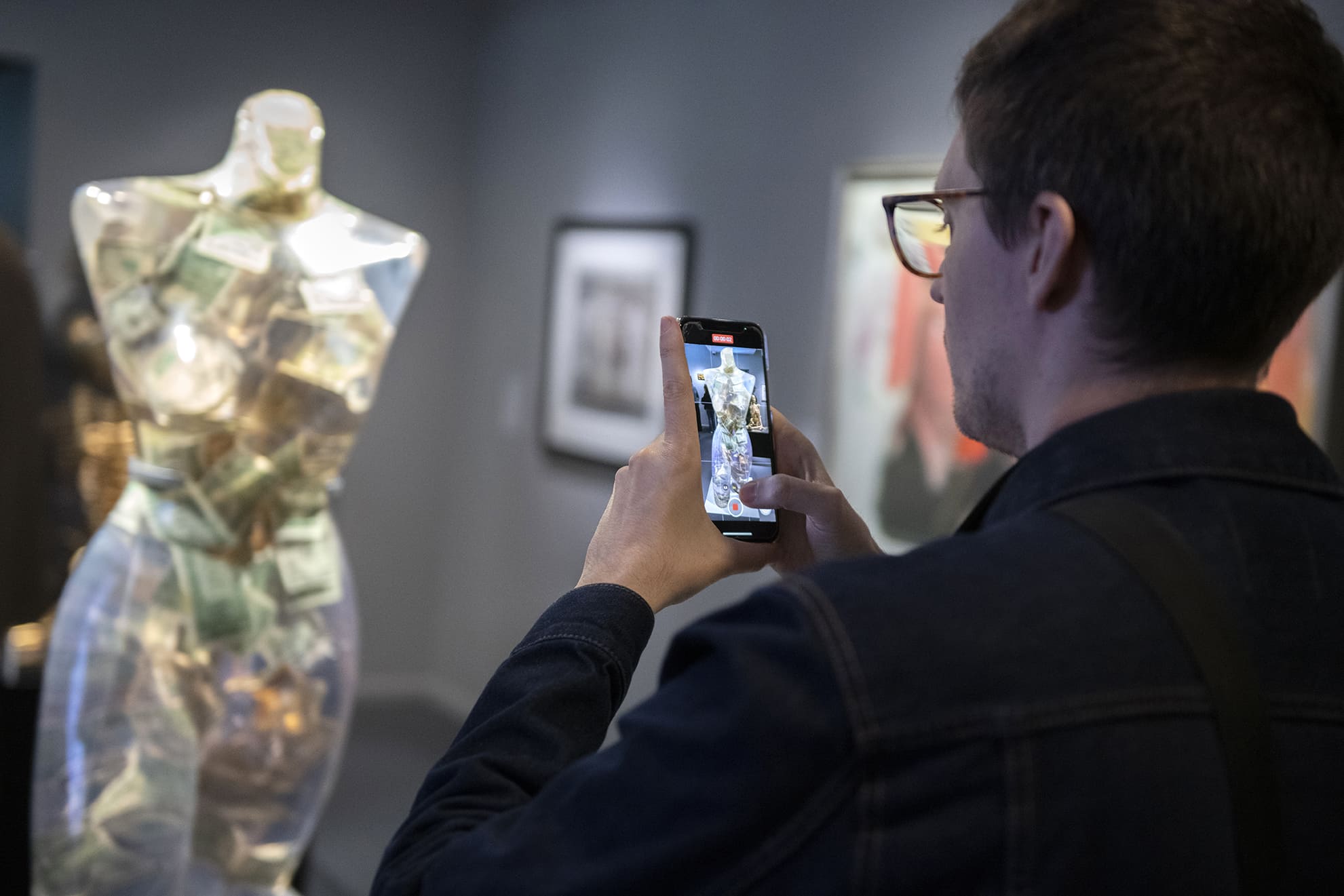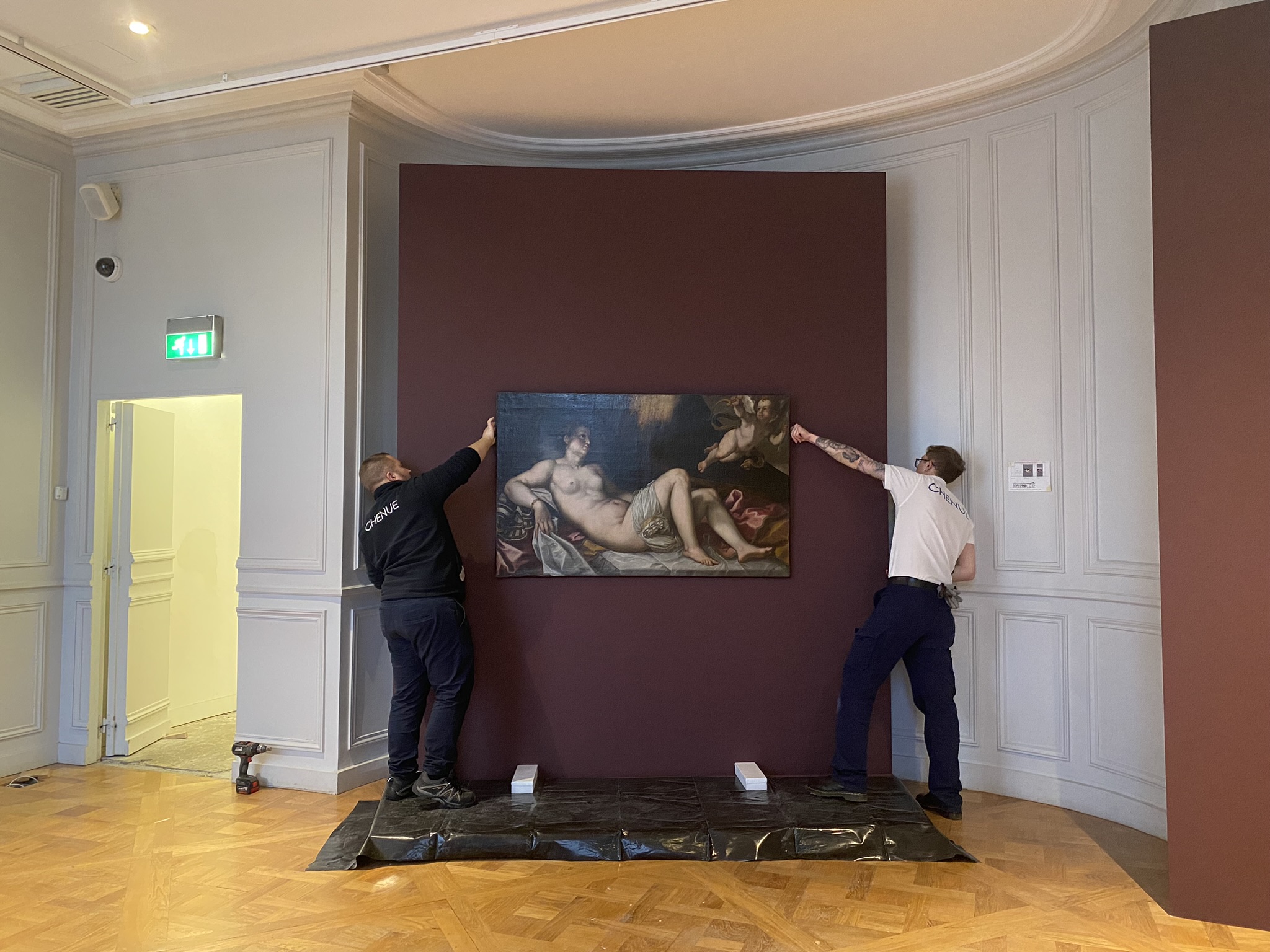Money in Art Exhibition – Preventive Conservation: a Key Challenge
France Muséums is working with La Monnaie de Paris to design its new exhibition “Money in Art”. Presented to the public from 30 March to 24 September 2023, this exhibition testifies to how the subject of money has fired artists’ imaginations and informed their work over the centuries. The show is curated by the art historian Jean-Michel Bouhours, former chief curator at the Pompidou Centre and director of the new National Museum of Monaco (2003-2008), who has written a number of books and articles on 20th-century art.
Featuring a varied array of over 150 artworks from different periods and places, the exhibition deals with a theme which, although rarely mentioned in the scientific domain, raises genuine challenges relating to preventive conservation, logistics and the management of works of art. The varied pieces on display provide an immersive experience that encourages the visitor to reflect upon the complex relationships between art, artists and money.
Preventive conservation: a key curatorial challenge
“Money in Art” looks at how artists through the ages have approached the monetary economy. The exhibition is divided into two parts grouping together a number of themes, from early material, religious, moral and symbolic representations of money from the 15th century onwards to the advent of the art market and the way artists have incorporated it into their work and today’s intangible digital art. Visitors are encouraged to think about the way they represent money themselves, and the show explores the many facets of the real or imaginary relationships artists have with money.
The selection of artworks reflects the broad curatorial scope of the exhibition and raised a genuine challenge for La Monnaie de Paris and France Muséums design teams. 70 lending institutions agreed to loans of varied and unusual types, making it possible to feature some 150 exhibits, some of them quite unexpected. They are displayed in an area totalling about 900 square metres.
As an international museum consultancy, France Muséums worked on design, loan management, artwork management, overall project coordination and mediation, and provided assistance with the exhibition design, interior fittings and production. France Muséums was also more specifically in charge of supporting the curator and La Monnaie de Paris teams by providing expertise on the subject of preventive conservation.
The project team for this exhibition was as follows: Olivia Davidson, Exhibitions and Publications Director; Valentine Bellucci, Exhibitions Project Manager; Ophélie Guinet, Artwork Registrar; Marie Knidler, Artwork Registrar; Alice Fourmont, Mediation and Programming Officer; Mathilde Etot, Mediation and Learning Programs Manager; Solène Mannant, Temporary Exhibition Officer; and Zeynep Inanc, Exhibition Project Assistant/Consultant.
The new exhibition “Money in Art” at La Monnaie de Paris required the France Muséums teams to provide high-level technical expertise on the crating, transportation and installation of the artworks and to support the curatorial teams, especially regarding the design of the visitor journey.
The purpose of a museum is to share knowledge by exhibiting objects, but it must also ensure that those objects are preserved for future generations. The choice of artworks and objects primarily depends on the message the curator wants to get across, but the curatorial vision is not the only constraint that must be taken into account. When an exhibition is being designed, it is vital to define the principles according to which the works will be presented, taking account of a range of physical parameters (weight, size, materials, and so on) and also of the building and exhibition space in which they are to be displayed. The aim is to provide an array of appropriate and effective solutions (safety, lighting, display furniture, hanging systems and so on) while ensuring compliance with preventive conservation standards (where humidity, light, pollution, vandal-proofing, etc., are concerned). All these factors have a significant influence on how the artworks are distributed along the visitor pathway, and may necessitate changes to the scientific message of the exhibition as a whole.
Typology of artworks and its impacts on the visitor experience
The exhibition “Money in Art” groups together numerous types of artworks including paintings, drawings, photographs, mixed-media items made of organic materials (a meat dress, a mummy, a skeleton), textiles, sculptures and digital art. For each type of work, rules and recommendations relating to preventive conservation must be applied, and this has an impact on the visitor journey and the overall visitor experience.
The France Muséums teams helped La Monnaie de Paris to deal with the conservation constraints relating to each exhibit. They were able to provide assistance on two complex subjects in particular: graphic art and photographs, and organic artworks. Works on paper such as drawings and prints have a specific sensitivity connected to the materials used to make them, and are especially vulnerable to potentially harmful factors such as light (Lux and UV) and variations in humidity. Several such pieces feature in “Money and Art”, including a page from Emile Zola’s preparatory notes for his book L’Argent and a photographic portrait of Baron James de Rothschild (1792-1868) by André-Adolphe-Eugène Disderi.
Such artefacts have to be kept in appropriate lighting conditions and protected from pollution in a stable, controlled environment. Works on paper are photosensitive and can only be exhibited for a maximum of three months in low light, followed by a 3-year resting period in the dark before being shown again. This was the real challenge of this exhibition, which is to be presented for 6 months. The curatorial teams had to make choices, selecting different works on paper to be exhibited during the first and last three months respectively. France Muséums helped the teams deal with these time constraints so that the rotation of the artworks will have a minimal effect on the message of the exhibition and the visitor experience.
The physical characteristics of certain contemporary artworks make them challenging to install because they require complex on-site assembly. This is true, for example, of Jana Sterbak’s “Meat Dress” which has to be reconstituted on site following detailed assembly instructions provided by the artist. This contemporary piece, like the other organic works presented in the exposition such as a mummified hand and Contrat pour un corps n°3 by Michel Journiac, which is a human skeleton, are subject to infestation by insects and mould and damage from sunlight. They require strict supervision and care, with insect traps to avoid infestation.
All this impacts the visitor experience in various ways not only because of the changes that need to be made to the presentation of the works but also because they are so varied in terms of the artistic movement they belong to, the period during which they were made, their type and complexity. The France Muséums teams have worked hard to develop the most effective mediation approach, allowing the works to speak for themselves while providing keys to understanding and guiding the visitor through the different themed sections. As well as the explanatory texts and captions, three mediation systems have been developed by France Muséums including an educational pathway running through the entire exhibition. These low-tech systems feature 5 hands-on points next to complex artworks, allowing visitors to interact with the exhibits in order to gain fresh insights into their implications and meanings. Many different notions, some of which the general public may find challenging, are dealt with in the exhibition, especially in the second section, which explores the value assigned to an artwork and the very concept of what a work of art is. The mediation teams have developed an interactive digital tool, accessible to all, which explains these questions in a playful way.
Designing and producing an exhibition involves finding safe and secure methods of presentation that provide effective conservation while showcasing the exhibits to the public and creating the necessary conditions for discovery and learning. The challenge faced by the experts at France Muséums is always to strike the right balance between respecting the exhibition’s curatorial aims, making its content accessible to the general public, and implementing the necessary preventive conservation methods.



